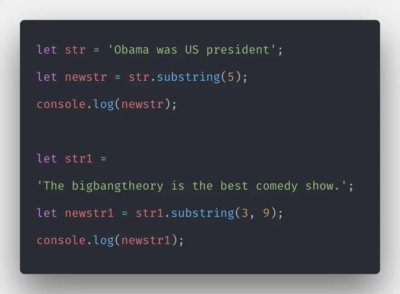
The JavaScript programming language, renowned for its versatility, provides developers with a powerful Date object that facilitates efficient manipulation and extraction of date and time information. Among the arsenal of methods available within the Date object, the ‘getDay()’ method emerges as a crucial tool for retrieving the day of the week associated with a specific date. In this all-encompassing article, we embark on a comprehensive exploration of the ‘getDay()’ method, delving into its syntax, behavior, and practical implementation in JavaScript applications.
By dissecting the intricacies of the ‘getDay()’ method, developers gain a deeper understanding of its functionality and unlock the potential to harness its power in various scenarios. We will elucidate the correct usage of this method, providing clear examples that showcase its efficacy. Furthermore, we will explore the nuances of working with the zero-based values returned by ‘getDay()’, enabling developers to seamlessly integrate this valuable information into their applications.
With a firm grasp on the ‘getDay()’ method, developers can augment their proficiency in working with dates, empowering them to build sophisticated applications that rely on accurate and reliable date-related functionality. Join us on this enlightening journey as we unlock the full potential of the ‘getDay()’ method and unlock new possibilities in JavaScript date manipulation.
Syntax
The getDay() method in JavaScript’s Date object retrieves the day of the week for a given date based on local time. It returns an integer representing the day of the week, where 0 corresponds to Sunday, 1 to Monday, 2 to Tuesday, and so on. By calling getDay(), developers can easily extract the specific day of the week associated with a date, allowing for various operations and conditional logic based on the day. This method provides a convenient way to handle date-related tasks and make informed decisions based on the day of the week within JavaScript applications.
To retrieve the day of the week for a specific date using JavaScript’s Date object, the syntax for the getDay() method is as follows: Date.getDay()
Description
In the world of JavaScript, the getDay() method plays a crucial role in retrieving the day of the week. It provides developers with a zero-based value that signifies the specific day. This value serves as a key to accessing and performing operations on elements within arrays. For example, it becomes incredibly handy when developers need to access a particular day from an array of days. By embracing the zero-based index, developers can seamlessly navigate and manipulate weekdays within their applications. This efficient approach allows for streamlined coding and empowers developers to create dynamic and responsive applications that revolve around the concept of time.
const valentines = new Date(“1995-02-14”);
const day = valentines.getDay();
const dayNames = [“Sunday”, “Monday”, “Tuesday” /* , … */];
console.log(dayNames[day]); // “Monday”
While the getDay() method is useful for retrieving the day of the week, it is important to note that for internationalization purposes, it is recommended to utilize the Intl.DateTimeFormat with the options parameter. This allows for greater flexibility and customization when formatting dates according to different locales and preferences. By leveraging the options parameter, developers can tailor the date representation to meet specific internationalization requirements, ensuring that the displayed day of the week aligns with the user’s preferred language and cultural conventions.
const options = { weekday: “long” };
console.log(new Intl.DateTimeFormat(“en-US”, options).format(valentines));
// “Monday”
console.log(new Intl.DateTimeFormat(“de-DE”, options).format(valentines));
// “Montag”
Return Value
In the realm of JavaScript, the getDay() method stands as a reliable tool for obtaining the day of the week based on a given date and local time. This method gracefully returns an integer value, representing a specific day of the week. The range of this returned value spans from 0 to 6, aligning each number with a corresponding day: 0 for Sunday, 1 for Monday, 2 for Tuesday, and so forth, until 6 for Saturday. By harnessing the power of the getDay() method, developers gain the ability to effortlessly extract and utilize the day of the week associated with a particular date. This invaluable information can be applied in a multitude of ways within JavaScript programs, empowering developers to craft dynamic and intelligent applications.
Example
You can try out the following example to understand the usage of the getDay() method:
<html>
<head>
<title>JavaScript getDay Method</title>
</head>
<body>
<script type = “text/javascript”>
var dt = new Date(“December 25, 1995 23:15:00”);
document.write(“getDay() : ” + dt.getDay() );
</script>
</body>
</html>
Output
getDay() : 1
Conclusion
The getDay() method in JavaScript’s Date object is a versatile tool that allows developers to effortlessly obtain the day of the week for a specified date. This valuable functionality opens up a world of possibilities for developers, enabling them to perform a wide range of operations and implement intelligent logic based on weekdays within their JavaScript applications. Whether it’s building calendar systems, scheduling applications, or implementing business rules that depend on specific days, having a solid grasp of the getDay() method empowers developers to work with dates effectively and create applications that seamlessly handle date-related operations. With this knowledge in hand, developers can unlock the full potential of JavaScript’s Date object and build robust and dynamic applications that cater to various time-related requirements.







